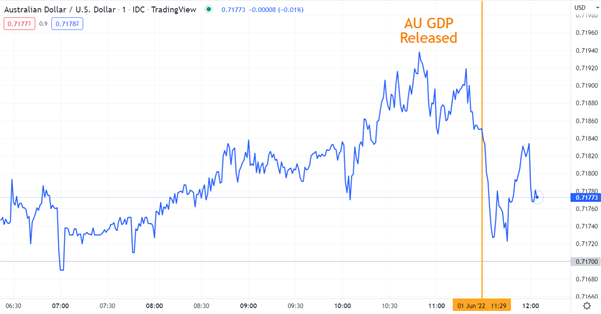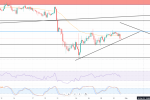The Australian dollar fell on several fronts after the release of GDP and rising risks. Will the AUD / USD fall

Australian Dollar, AUD/USD, GDP, RBA, Commodities, Ukraine, China, USD
- The Australian Dollar is struggling despite strong GDP numbers
- AUD had been rallying prior to the data but USD strength emerged
- Risks are swirling for AUD/USD. Will the ascending trend resume?
Australian dollar fell: The Australian dollar is struggling despite strong GDP figures. The AUD had risen before the data, but the US dollar has strengthened and risks to the AUD / USD are circulating.
The Australian Dollar surprisingly gave up early gains and dipped after 4Q quarter-on-quarter GDP came in at 0.8% against forecasts of 0.7% and a previous 3.4%.
This made annual GDP to the end of March 3.3% instead of 3.0% anticipated and 4.2% prior. It reveals upward revisions to previous quarters.
Australia’s ASX 200 stock-index got a small bump up on the news after finishing -3% for the month of May.
Today’s figures come after yesterday’s local building approvals missed by a notable margin. They came in at -2.4% month-on-month in April instead of rising by 2.0% as expected.
The immediate reaction of AUD/USD appears to be more related to US Dollar strength rather than AUD weakness. The Aussie is only mildly weaker against most other G-10 currencies.
AUD/USD SHORT TERM CHART

Australian dollar fell
Naturally, AUD/USD is subject to external factors. The broad picture sees the Ukraine war, China’s zero-case Covid-19 policy and central bank tightening schedules as the main themes that the market is focused on for now.
The entire commodity complex is experiencing elevated prices due to scarcity created by the war in Ukraine and a resolution to the conflict does not seem apparent. This has not translated into a higher AUD/USD despite Australia’s trade balance continuing to improve.
Tomorrow we get the latest data for April and the market is forecasting AUD 9 billion trade surplus for the month. China’s zero-case Covid-19 policy continues to present risks to global trade.
The slight easing of restrictions in the last few days does little to allay fears that Chinese ports could easily be interrupted again. The market cannot currently see a way out of the pandemic for China if they persist in a zero-case policy when the rest of the world is seeing regular cases.
The US Dollar has been gaining in the last few sessions as the chance of a September pause in the Fed’s rate hike path hit a few hurdles. Comments from Fed Governor Waller and Atlanta Fed President Bostic have intimated that inflation needs to be moving significantly south for a pause to happen.
Additionally, after a meeting with Fed Chair Jerome Powell, US President Joe Biden affirmed that the Fed should be respected and re-iterated its independence in its fight on inflation.
The market interpreted his comments to give the green light for aggressive rate hikes. Political commentators interpreted this as the President looking to share the blame for any impending slow-down in the economy.
In any case, for the Aussie from here, the focus is on tomorrow’s trade data but it would seem that it would have to be a stellar number to lift the currency.






